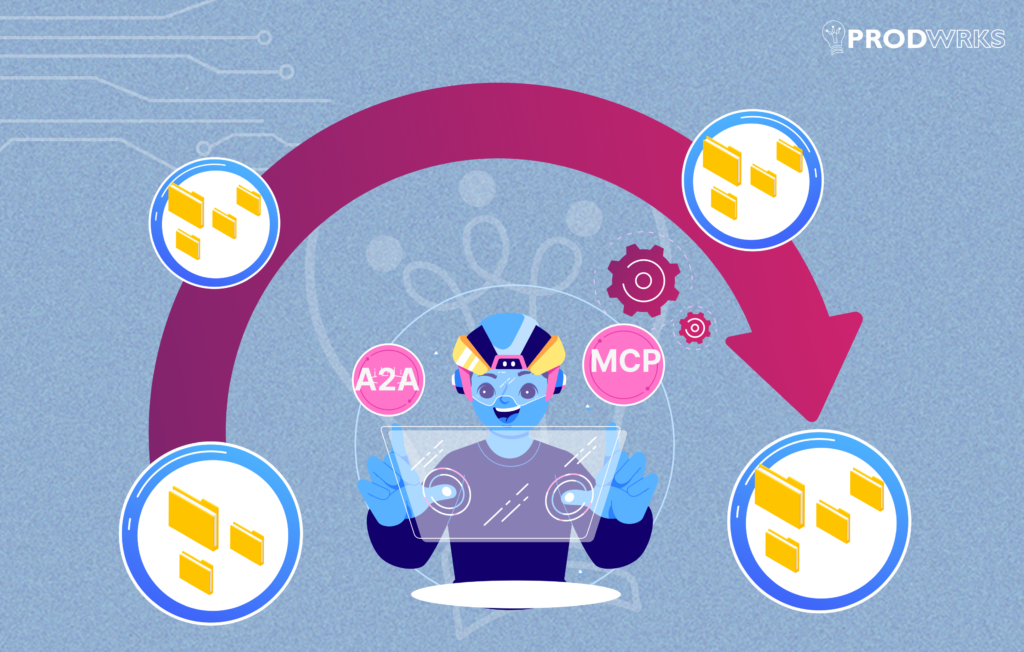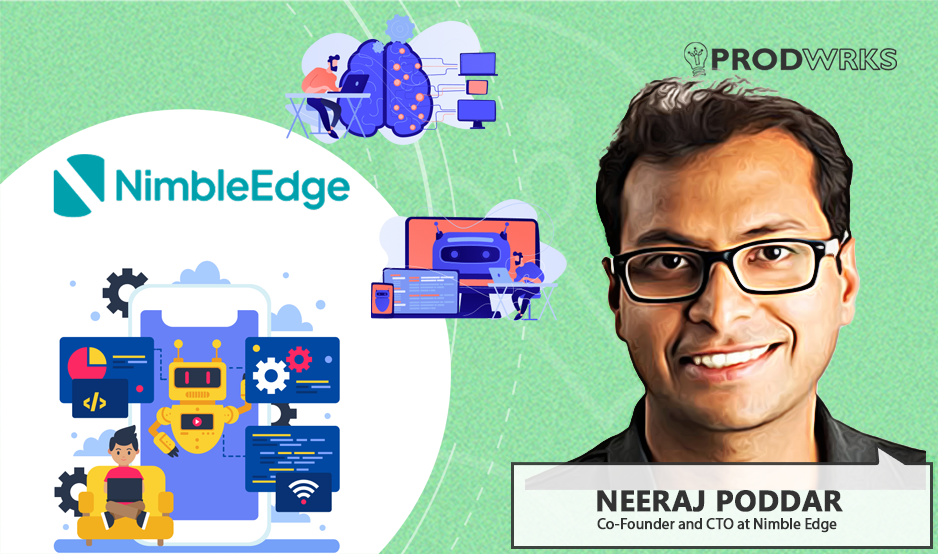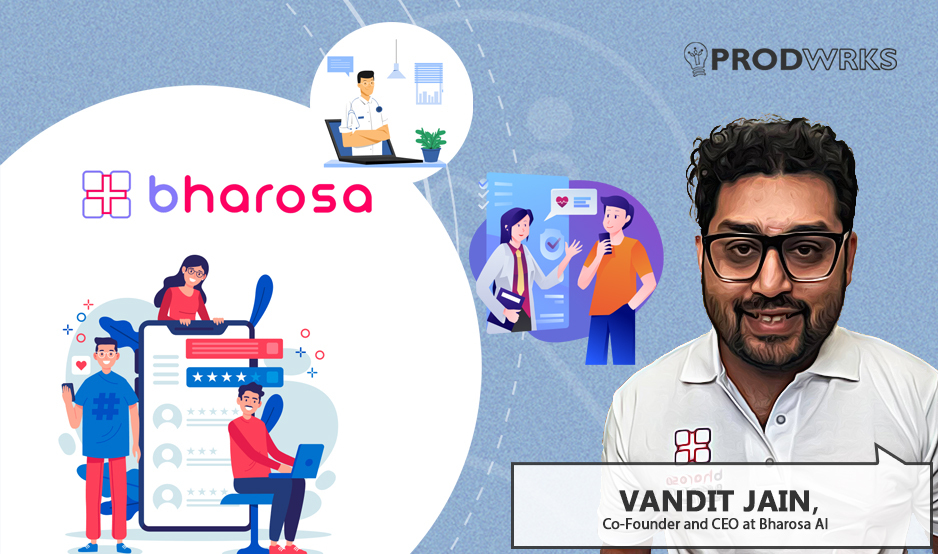
Let’s be honest. You’re hearing the term “Agentic AI” everywhere. Maybe you’ve already dipped your toes into building your first AI agents. You might be envisioning them to revolutionize your customer support, streamline complex workflows, or even create entirely new product categories or features.
But if you’re like many product founders and leaders I talk to, you might be hitting a frustrating wall. Your “agents” feel more like… glorified chatbots. They can answer questions, sure, but getting them to reliably do things in the real world, like interacting with your existing tools or databases, is a tangled mess.
And the idea of multiple AI systems collaborating autonomously? That feels like a distant dream.
The solution, like most people presume, isn’t necessarily a bigger, more expensive AI model. It’s something far more foundational. Two emerging protocols, the Model Context Protocol (MCP) and the Agent2Agent (A2A) protocol, are quietly laying the groundwork to standardise AI interactions and make your agentic AI ambitions a practical reality.
And the industry’s biggest players (Google, Microsoft, OpenAI, Anthropic) are all rallying behind these protocols.
If you’re serious about building AI agents that deliver real value, understanding these protocols is fundamental to your product strategy. So, let’s break down MCP and A2A, why they matter, and how they can transform your approach to building next-gen AI-driven product experiences.
First, Let's Get on the Same Page: What are AI Agents?
You’ve used ChatGPT and Gemini. You’ve seen AI generate text, images, videos, and whatnot. Those are powerful tools, but an AI agent, in the context we’re discussing, is a leap beyond.
Think of it this way. A traditional AI tool is like a skilled generalist you consult. You ask a question (a prompt), and it gives an answer. You give a command, it performs a single task.
An AI Agent, on the other hand, is more like an autonomous team member or a proactive personal assistant. You give it a goal, and it figures out the steps, uses the necessary tools (often software and systems that your employees already use), learns from the outcomes, and can even work with other AI agents (a marketing agen working with a sales agent) to achieve that goal.
For instance, imagine you want to plan a team outing.
A chatbot like ChatGPT or Gemini might help you brainstorm locations or draft an email. However, an AI Agent (or a team of agents) could:
- Poll team members for availability (interacting with calendar APIs and Slack).
- Research and compare hotel options (by accessing Airbnb).
- Book the chosen option (making transactions).
- Create a shared itinerary (updating a document or project management tool).
- Send out calendar invites and reminders to your team.
- All with minimal human intervention, once the initial goal is set.
This is the promise and the future that all tech honchos are talking about – AI that doesn’t just respond, but acts and accomplishes. Yet, for AI agents to be truly this effective, they must interact seamlessly with various tools and with each
Why Building Truly Useful Agents Has Been So Hard
If you’ve tried to build agents that go beyond simple Q&A, you’ve likely felt the friction.
1. Data Silos & Integration Nightmares: Your AI needs context. That context lives in your Salesforce, your Jira, your Zendesk, your internal databases, your Google Workspace. Getting your AI model to securely and reliably access and act upon this data is a painstaking engineering task. Each connection is often a custom-built, brittle integration or an API bridge that most likely keeps breaking.
2. Model Lock-In: You build an amazing workflow for OpenAI’s latest model. What happens when a new model from Anthropic or Google comes along that’s better suited for your specific task? Reworking everything is a costly deterrent.
3. Security Paralysis: Giving an AI model keys to your kingdom (your sensitive business systems) is, understandably, terrifying if not done right. How do you ensure it only accesses what it needs and doesn’t go rogue?
4. Lack of Collaboration: Your sales AI might be great at lead scoring, and your marketing AI brilliant at content generation, but getting them to work together on a cohesive campaign? Good luck. It’s like trying to get two people who speak different languages to co-write a novel without a translator.
Game Changer #1: MCP - Giving Your Agents "Hands and Eyes"
At its core, MCP (Model Context Protocol) is an open standard that enables two-way connections between AI agents and real-world business systems: your CRMs, calendars, internal tools, knowledge bases, and more.
To put it plainly, think of MCP as the USB hub for AI agents – a plug-and-play protocol that lets your AI seamlessly access, understand, and act on live business context.
→Checkout 10 wild examples of MCP in action
Behind the scenes, here’s what happens:
MCP Server → A piece of software that securely exposes your system’s data and functions (e.g., Salesforce, Jira, Notion). This is the data source side.
MCP Client → The AI application or agent that talks to the MCP server (requests data or sends instructions). This is the user-facing AI agent or interface.
Let me explain it with an example. Imagine that you run a D2C business and you want to build an AI agent to:
- Check customer complaints from Zendesk,
- Look up those customers in Salesforce,
- Draft personalized apology emails, and
- Schedule a follow-up task in Asana.
MCP not only makes this possible, but also easy and secure to build:
- Zendesk and Salesforce run as MCP servers (they securely expose data).
- Your AI assistant (MCP client) connects to both.
- It pulls context (tickets, account info),
- It generates actions (emails, tasks), and
- It sends those actions back to the right tools automatically.
What does this mean?
No copy-pasting prompts. No fragile plugins. Just clean, protocol-based automation that is followed by all applications. It’s just like when browsers standardized around HTML and JavaScript. Suddenly, the web exploded with products that could securely and seamlessly open across all browsers. MCP could do that for AI apps.
MCP is on track to become the de facto operating standard for AI-powered workflows.
- Interoperability: Since industry giants like OpenAI (for ChatGPT), Google (for Gemini), and Anthropic (for Claude) are all adopting MCP, developers only have to build integrations once. You don’t need to build custom API plumbing for every model.
- Increased Reliability: Standardized connections are more robust than a patchwork of custom integrations.
- Faster Development: Drastically reduce the time and effort to connect your agents to the tools your users (and your agents) need.
- Enhanced Security: MCP provides a more controlled way for AI to interact with sensitive systems. More companies will feel safe and capable of integrating AI agents.
MCP lays the foundation for true AI agents that don’t just chat, but do work.
Game Changer #2: A2A – Your Agents Learn How to Talk to Other Agents
Okay, so MCP gives your individual agent superpowers to interact with the world’s tools. But what happens when the task is too big or too complex for a single agent? What if you need specialized expertise from different AI agents (HR + marketing + sales, for instance) to collaborate on a common goal?
This is where the Agent2Agent (A2A) protocol (championed by Google and recently embraced by Microsoft) plays a major role. A2A is an open standard designed to let different AI agents (even those built by different companies on different platforms) communicate, coordinate, and collaborate.
How A2A Solves the Multi-Agent Collaboration Problem?
Before A2A (The Disconnected Dash):
When your e-commerce platform receives a new order, you might have an Inventory Management AI that checks stock levels. Separately, a human (or a basic script) takes that info and inputs it into a Shipping Logistics System to find the best carrier. Then, another manual step or a separate, unlinked Customer Notification System is triggered to send an update.
If the Inventory AI finds the item is low in the primary warehouse, it flags it. But there’s no automatic communication to an AI that could check stock in a secondary warehouse or an AI that could proactively inform the customer of a slight delay and offer alternatives.
Each step is a potential point of failure or manual intervention, slowing things down and increasing the chance of errors. It’s like a relay race where runners have to stop and shout instructions to each other instead of a smooth baton pass.
With A2A – You can build (or leverage) specialized agents to coordinate flow:
With A2A, this becomes a smooth, automated workflow orchestrated by collaborating, specialized agents:
- Order Processing Agent (OPA): Receives the new order (using MCP to pull data from your e-commerce platform).
- Inventory & Sourcing Agent (ISA): The OPA pings the ISA via A2A: “Need SKU_XYZ, quantity 1 for Order #123.” The ISA uses MCP to check real-time stock across multiple warehouses. If the primary is out, it automatically queries secondary locations or even checks with supplier drop-shipping agents (other A2A-enabled agents). It reports back to the OPA: “SKU_XYZ available, optimal source is Warehouse B.”
- Shipping Logistics Agent (SLA): The OPA, now knowing the source, instructs the SLA via A2A: “Ship Order #123 (SKU_XYZ from Warehouse B) to Customer Z.” The SLA uses MCP to interface with various carrier APIs (FedEx, UPS, local couriers), finds the most cost-effective and timely shipping option, books the shipment, and gets a tracking number.
- Customer Communication Agent (CCA): The SLA informs the OPA (and CCA) via A2A: “Order #123 shipped via FedEx, tracking #ABC.” The CCA then uses MCP to send a branded shipping confirmation email and SMS to the customer, including the tracking link. It can also proactively update the customer if the SLA reports any delays.
If you look at this workflow, each agent excels at its specific task. The A2A protocol ensures they work together seamlessly, and the MCP protocol ensures that they interact with your internal databases and tools without hiccups.
The Result for Your E-commerce Operation: Faster, more accurate order fulfillment, reduced manual effort, optimized shipping costs, and proactive customer communication. This translates directly to better customer satisfaction and improved operational efficiency.
This is just one example in e-commerce. Think about the possibilities for your product.
The Power Couple: MCP + A2A is where the magic truly happens.
MCP and A2A can be applied to any domain. For example:
- Healthcare: A Diagnostic Support Agent could collaborate with a Treatment Planning Agent and a Patient Communication Agent, sharing information securely via A2A, while each uses MCP to interact with EMRs, medical databases, and patient portals.
- Software Development: A Bug Triage Agent could identify and categorize issues, then pass them to a Code Generation Agent for potential fixes, which then hands off to a Testing Agent – all orchestrated via A2A.
From these examples, you notice that MCP + A2A forms the bedrock of Agentic AI strategy. And this is common across domains. MCP gives your individual AI agents the ability to perceive and act within specific tools and data sources. A2A allows these empowered agents to combine their strengths, communicate effectively, and work as a coordinated team.
Together, they form the foundational ‘Agentic Stack’. This isn’t just a minor improvement; it’s the enabling infrastructure that will allow you and your teams to move from building AI features to architecting AI-native systems and intuitive workflows.
What This Actually Means for You and Your Product Roadmap
1. Building True AI-Native Experiences, Not Features
In the old way of building AI experiences in your product, you may have asked your product team to maybe add an AI summary or a chatbox to your dashboard.
The new way (with MCP & A2A) would be something like, “Let’s build a ‘Deal Closer Agent’ for our CRM.” This agent would use MCP to monitor deal progression, pull relevant data from marketing automation (another tool), and identify roadblocks. If a complex legal query arises, it uses A2A to consult a specialized ‘Legal Clause Agent’ from a partner company, then uses MCP to draft an email to the sales rep with suggestions and update the CRM.
MCP and A2A protocols allow you to do all this, transforming your products into truly autonomous systems. So, you must ask yourself, how can AI agents, empowered by MCP and collaborating via A2A, fundamentally reimagine core workflows in your product, rather than just incrementally improve them?
2. Future-Proof Your AI Investments (and Avoid Vendor Lock-In)
By building on open standards like MCP and A2A, you’re not tying your entire agentic strategy to one AI model provider. Your core agent logic and its ability to connect to tools (via MCP) and other agents (via A2A) become more portable.
What you need to do: Prioritize MCP compliance when designing how your product exposes data or actions. Build your agents as MCP clients. Start architecting for A2A-style inter-agent communication, even if it’s initially between your own internal agents.
3. Decide. Is Your Product an Island, or a Connected Hub in the Agentic Web?
In the post-AI world, your product doesn’t have to do everything. It can be a powerful node in a larger ecosystem.
Consider this:
- Could your product expose its unique data or functionality as an MCP Server, allowing other third-party agents to plug in and create value for your users (and potentially new revenue streams for you)?
- Could your product host specialized agents that users can “hire” and integrate into their own A2A-orchestrated workflows?
Example: Say that you’re a product manager in a market intelligence platform. You could expose your insights via an MCP server. Another company’s AI-powered strategy agent could then pull this data to inform its recommendations. Your company makes money out of it.
4. Identify Your Unique Contextual Advantage
In the agentic era, the richness and accessibility of context is king. What unique data, insights, or access does your product offer? MCP makes it easier to feed this context to agents. A2A allows that context to be leveraged by a wider array of specialized intelligences.
Your Move: Identify your product’s crown jewels of context. How can you make them securely and actionably available to AI agents (yours and potentially others) to solve bigger user problems?
Next Steps: Start Building the Future
Here’s what you should be doing, starting today:
1. Educate Yourself and Your Team:
Dive deeper into MCP and A2A. Understand the specs (many are open on GitHub). Discuss their implications for your specific product domain.
2. Map Your “Agent Terrain”
- What are the key internal and external systems your ideal AI agents would need to interact with? (These are your MCP Server candidates).
- What complex user goals could be better achieved by a team of specialized agents? (This is your A2A exploration zone).
3. Start Small, Think Big:
- Can you identify one high-value workflow where an agent, using MCP to connect to just one or two key systems, could provide significant user benefit? Build that.
- If you have multiple internal AI services, could you start experimenting with A2A-like principles for their communication.
4. Expose, Don’t Just Consume: Think about how your product could offer its capabilities to the agentic web by becoming an MCP server. This could be a powerful strategic move.
5. Stay Agile: These standards are evolving. The key is to build with modularity and an eye towards interoperability.
MCP and A2A are the enablers that will allow you to move beyond AI hype and build truly intelligent, autonomous, and collaborative solutions that solve real-world problems for your users. As product leaders and founders, you are in the driver’s seat.
The opportunity is to redefine what your product can be when AI truly has eyes, ears, hands, and the ability to work as part of a team across your users’ entire digital universe.



